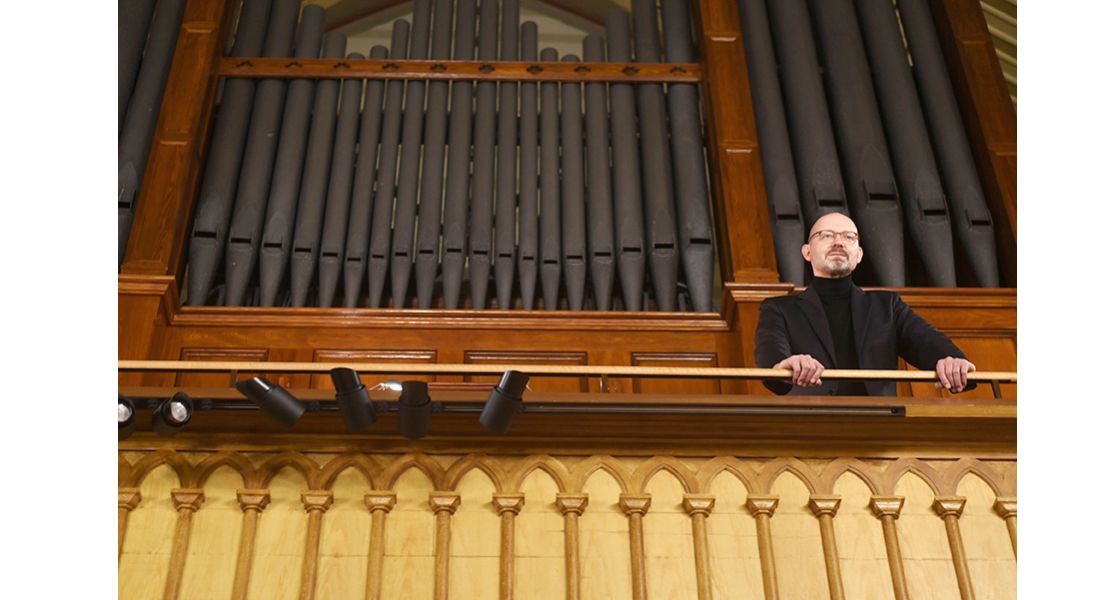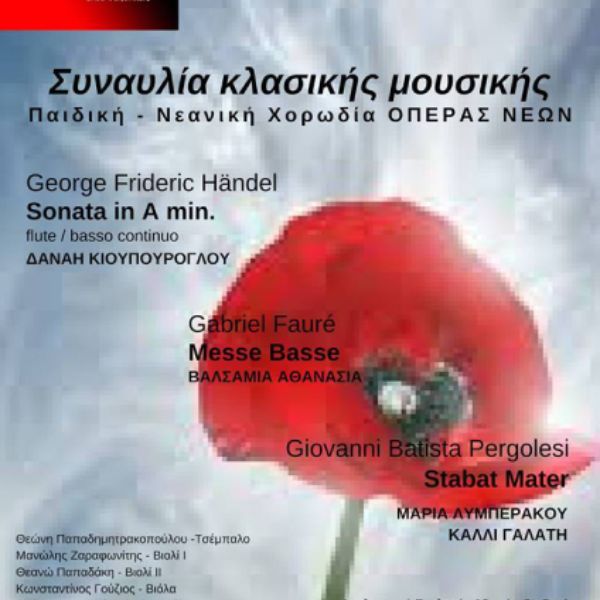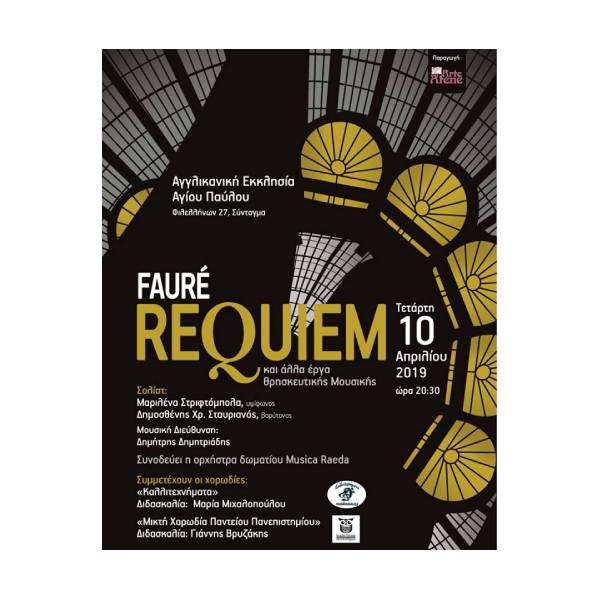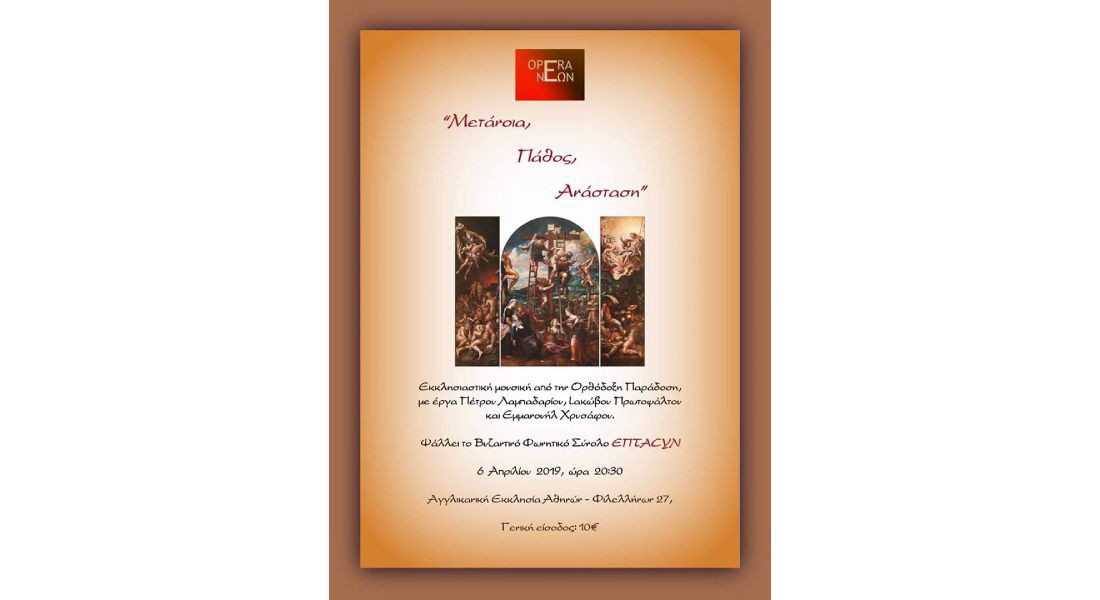SPRING ORGAN CONCERTS 2019(SOC) “Stabat Mater” by Pergolesi STRATOS GIORBANOGLOU, organ (Greece)
SPRING ORGAN CONCERTS 2019(SOC)
“Stabat Mater” by Pergolesi
STRATOS GIORBANOGLOU, organ (Greece)
Tuesday 16th April, 20.30
at St Paul’s Anglican Church, 27 Filellinon street, Syntagma, Athens
After 15 years of the European awarded Spring Organ Series (SOS) in Athens, the Series is renewed and renamed to Spring Organ Concerts (SOC). The second organist of SOC 2019 is Stratos Giorbanoglou from Greece who will present together with Elisavet Athanasopoulou, soprano and Antonia Tzitzika, mezzo soprano a religious programme for the Anglican Holy Week.
Organized by : St Paul’s Anglican Church, Athens -Part of the Holy Week liturgies
ENTRANCE FREE- RETIRING COLLECTION










